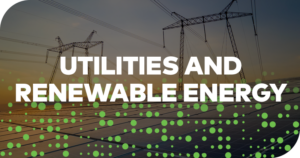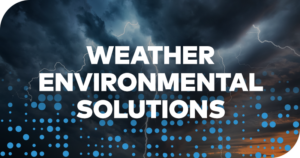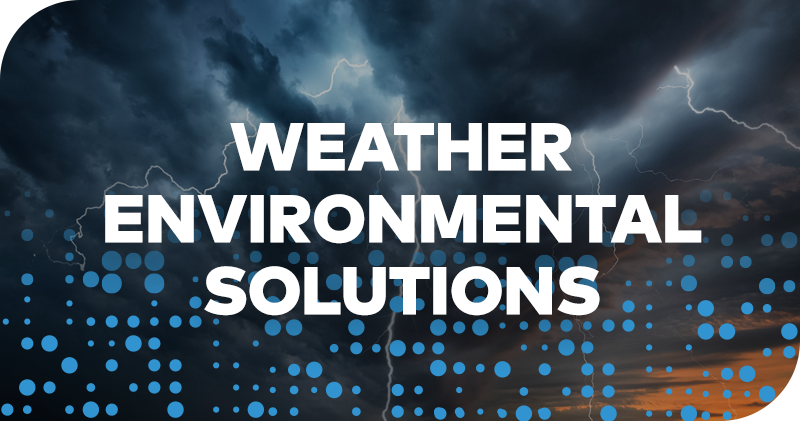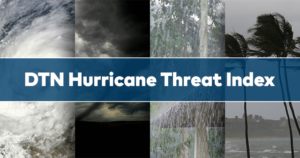Is the National Weather Service a Competitor to the Private Weather Sector?
There are two questions I’m often asked by friends, acquaintances, and even colleagues in the weather industry: “Is the U.S. National Weather Service a competitor of DTN?” and “What does a private weather company like DTN do?” To the first question, I respond that DTN is not a competitor to the NWS, nor are other private weather companies, although a few may act like they are. The second question requires a longer answer and is one that I start to explore in this article.
Creating and providing consistent and reliable weather information required by both Americans and American businesses is no small task. To do so successfully requires a unique partnership between the NWS and private weather information companies. The relationship is a very symbiotic one that continues to evolve and grow.
What the NWS Brings
As with any good partnership, both parties contribute in significant ways, capitalizing on their unique strengths. The NWS has the funding and long-term vision to make capital investments and develop an infrastructure that produces a wealth of weather information, including surface observations, radar, and satellite data, and atmospheric model runs. This information helps the government meet its public safety obligation. It wouldn’t be financially practical for a company in the private sector to produce and collect such massive amounts of weather information because it wouldn’t provide a return on investment. Thus, these functions can only be expertly executed on a large scale by a government agency.
NOAA has a policy of making its data and forecasts freely available, thus allowing the private sector to use the information for its purposes. Indeed, this sharing of data provides the backbone of the American weather enterprise.
The NWS has an essential role as the impartial and authoritative voice for public safety. You’ll most often see watches and warnings issued by the NWS for various severe weather events, including large hail, winds more than 55 knots, tornadoes, heavy rain events, tropical storms, and significant snowstorms.
The NWS also provides forecasts for any location in the United States as part of the scope of its mission. It provides consistent, high-quality services for the country as a whole, but in turn does not customize forecasts, watches or warnings to any individual or business.
In recent years, however, the NWS has focused on a specific set of “customers” to provide Impact-Based Decision Support Services (IDSS). These customers are emergency personnel and public safety officials at the local, state and national level. The goal of IDSS is to create value by helping these government partners make decisions when weather, water, and climate impacts the lives and livelihoods of the American people.
The Role of the Private Sector
The private sector utilizes the data made available by NOAA along with data from private sources and other global government agencies to create the services sold to customers. For example, at DTN, we statistically combine forecasts from the NOAA GFS model, the European ECMWF model, and our own higher resolution models to create global forecasts. Further, our 24/7 expert meteorologists curate these combined forecasts to produce the final forecasts that go out to clients.
Unlike the NWS, a private company can provide custom forecasts for a variety of purposes and precise locations. We provide forecasts for more than 150,000 locations across the globe in a format that’s customized for each customer’s needs. For example, we can provide forecasts for the exact location of an oil rig’s operation in the ocean. We can detail the time of critical wind changes or frontal passages and provide alerts about the onset of significant rain, lightning or thunderstorms that might affect their operations. We can also forecast maximum wind speeds and wave height at the ocean surface as well as atop rigs 200 feet above the ocean. Private forecasters can also provide customized forecasts for farmers, large festivals and events, retail interests and many other corporate interests.
Communication and Translation of Weather Information
A strength of the private sector is its ability to effectively tailor and communicate weather information to both consumers and businesses. While the government produces essential weather data and general forecasts for the nation, it lacks the readymade audience that many sizable private weather companies have developed. The private sector can broadcast weather watches and warnings issued by the NWS through apps, television, websites, and social media. Private companies have also been creative in providing weather information that helps people plan their outdoor activities for the hour, day and week.
The private sector can also provide value to large, global companies that seek seamless services anywhere in the world, including in places where the NWS does not provide coverage. Private weather companies such as DTN offer expert meteorologists that can consult with customers in real-time around the clock to help them make decisions when the weather is either impacting them or is forecast to do so.
The private sector offers an array of bundled services for individual clients or industries. For example, our clients who hold outdoor events may have a variety of needs. These might include forecasts for the days leading up to an event, hourly forecasts within 24 hours of an event, and special alerts shortly before and during an event for weather that might require evacuation or otherwise let organizers know when it’s safe to resume.
Private weather companies have particular expertise in translating weather events into customizable forecasts that impact the operational needs of businesses. For example, we produce hurricane forecasts that are tailored to business continuity plans. For instance, during Hurricane Florence, one of our customers with 26 substantial assets on the East Coast received point specific forecasts about the timing of winds reaching certain speeds at each location. That company then activated appropriate pre-planned responses to ensure the safety of their personnel and assets. This response can include the canceling or rescheduling of planned operations or deployment of staff in other ways to mitigate risk or prepare for a rapid response after an event.
A Thriving Partnership
Weather plays a significant role in business. It impacts the U.S. gross national product by approximately $1 trillion each year. Weather information is used by over 95% of all companies in the U.S. based on several recent studies. According to the NWS, weather creates $13 billion of value to businesses each year in the U.S.
The private weather sector alone is considerable. It has a market capitalization of $7 billion and estimated annual revenues of approximately $2 billion. The industry is growing at around 10-15% each year.
Neither the public nor private sector by itself can address the needs of all weather consumers. The efforts of the NWS and private weather companies go hand in hand to make our industry as successful and productive as it is.











 Comprehensive weather insights help safeguard your operations and drive confident decisions to make everyday mining operations as safe and efficient as possible.
Comprehensive weather insights help safeguard your operations and drive confident decisions to make everyday mining operations as safe and efficient as possible. Learn how to optimize operations with credible weather and environmental intelligence. From aviation safety to environmental compliance, our comprehensive suite of solutions delivers real-time insights, advanced forecasting, and precise monitoring capabilities.
Learn how to optimize operations with credible weather and environmental intelligence. From aviation safety to environmental compliance, our comprehensive suite of solutions delivers real-time insights, advanced forecasting, and precise monitoring capabilities. 

